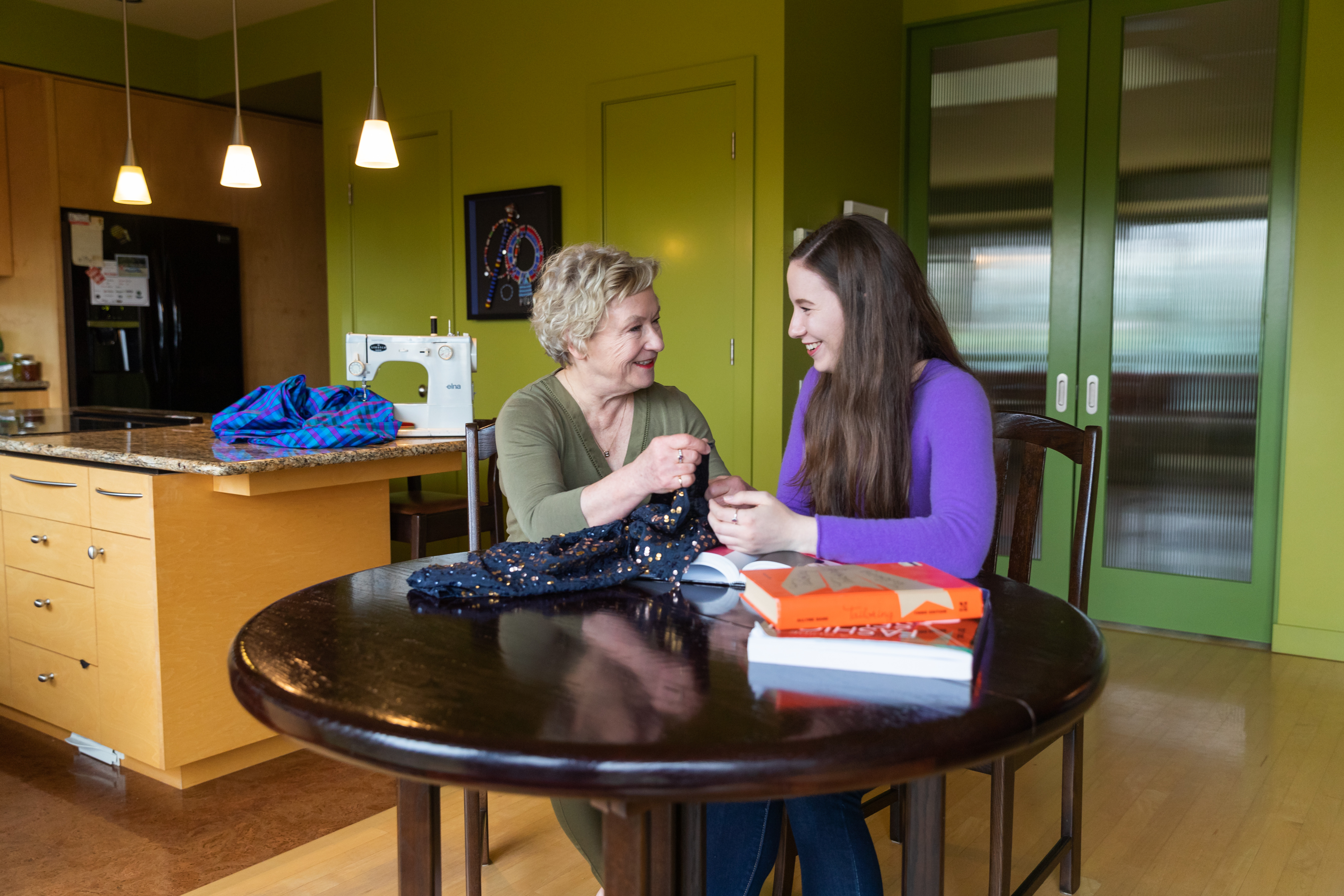
Susan Bauerfind found success in the world of investment banking but her human ecology degree continues to enrich her everyday life. Now she's hoping to help enrich the lives of others.
For years the busy investment adviser turned to sewing as a way to decompress from a stressful day. Before long, Susan's young daughter Kathryn took an interest in what her mom was doing every night, for hours behind the doors of the sewing room complete with a fold-out ironing board.
Susan, '79 BSc(HEc), was excited to feed Kathryn's curiosity and share her hobby. The two spent entire days together glued to the sewing machine - an ELNA Supermatic - figuring out workarounds for a difficult dress pattern or picking out the perfect fabric for a circle skirt.
So, when Kathryn enrolled in human ecology at U of A, Susan was hardly surprised. The surprise came a couple years later, when Kathryn invited her family to take a tour of the Anne Lambert Clothing and Textiles Collection, housed in the Department of Human Ecology.
"We had no idea this museum-worthy collection was there," says Susan. "It was really special to see the result of 30 years of careful collecting and curating - an impressive collection worth preserving."
On the tour Susan saw the history of fashion unfold in front of her eyes as the collections manager pulled artifact after artifact off the racks - from ancient Chinese robes to funky 1960s dresses. The collection features more than 23,000 pieces, all at risk of being lost without the proper care of a textile conservator. But there was one artifact in particular that gave Susan pause: a pair of traditional Chinese lotus shoes. Created for bound feet, the shoes were ornately embroidered and extremely fragile.
"We've all read about lotus shoes but how many of us have actually seen one?" she says. "Imagine your foot going into that size of a shoe. It's mind-boggling. Something like this has the power to open you up to a greater, richer understanding of history."
The astonishing collection reignited Susan's passion for textiles. It also sparked a newfound appreciation for the cultural value and historical significance of these types of artifacts. She left the tour buzzing with the desire to help save the collection from deterioration.
"I was excited about the opportunity to give to something as tangible and necessary as this collection," says Susan. "It would be a shame if we were to lose the insights it offers into cultural history."
Susan's generous donation will help establish a textile conservator position to maintain and further develop the collection. Her wish? That future generations of students can benefit from having it at their fingertips.
"The collection gives textiles students like me a hands-on learning opportunity," says Kathryn. "Working with these artifacts connects us to the real world, to history. It's important to preserve that."